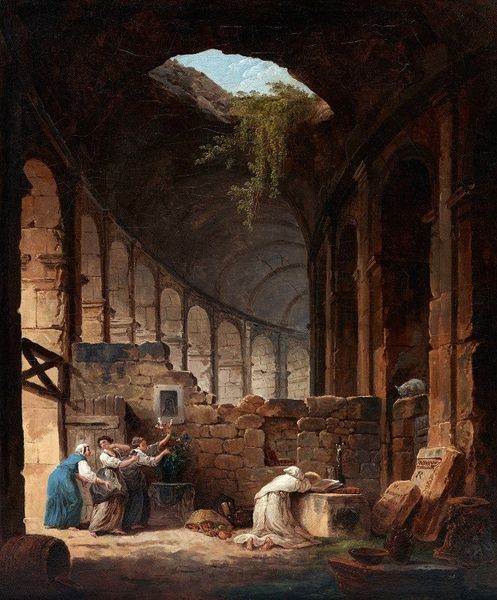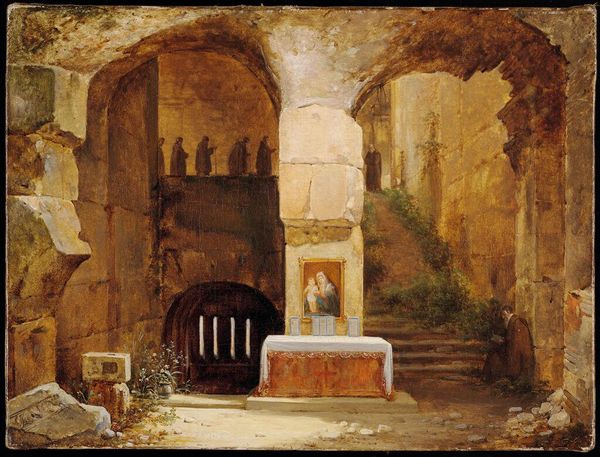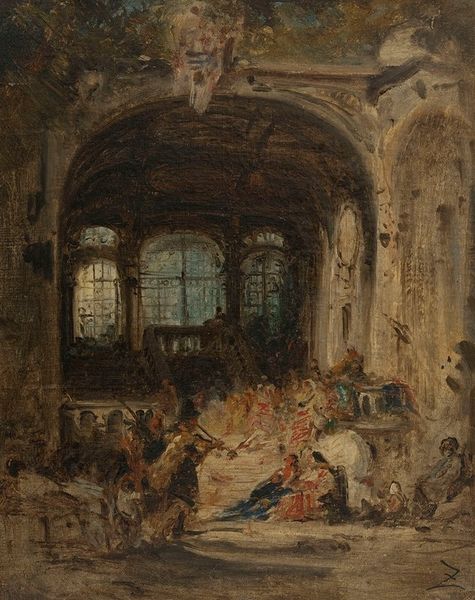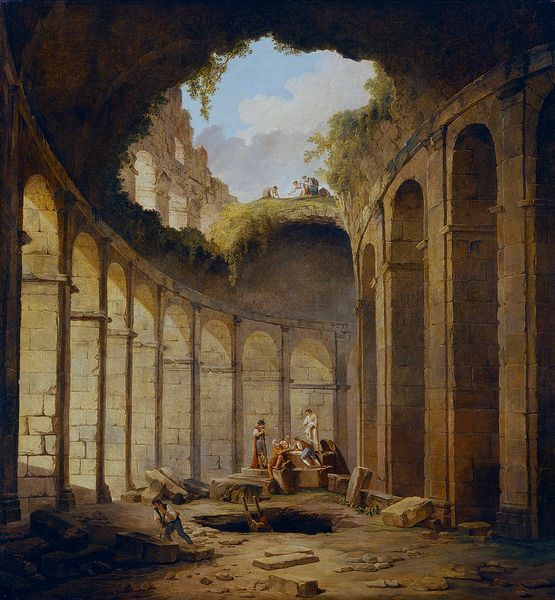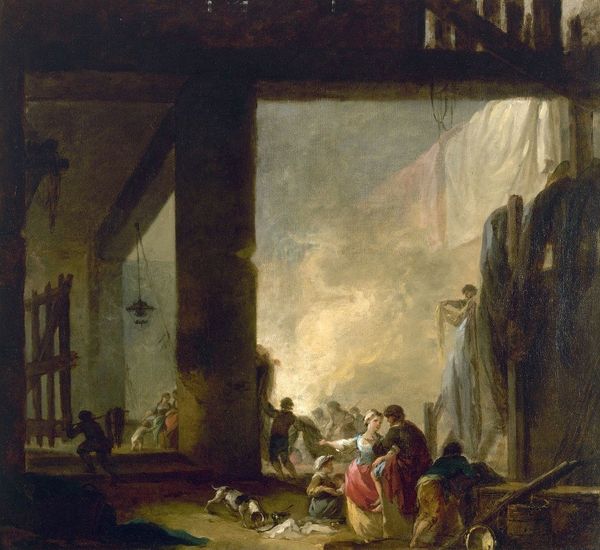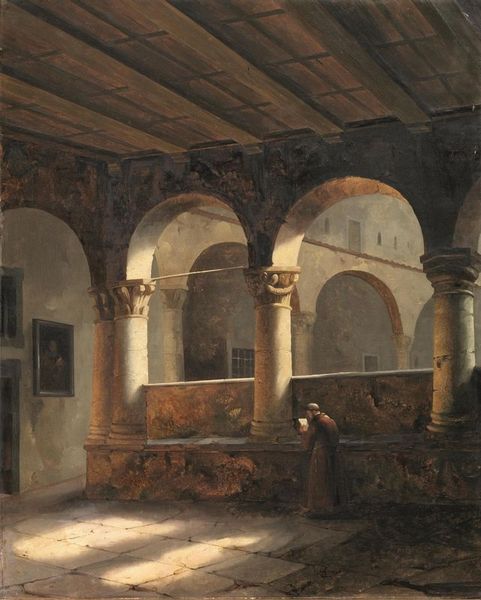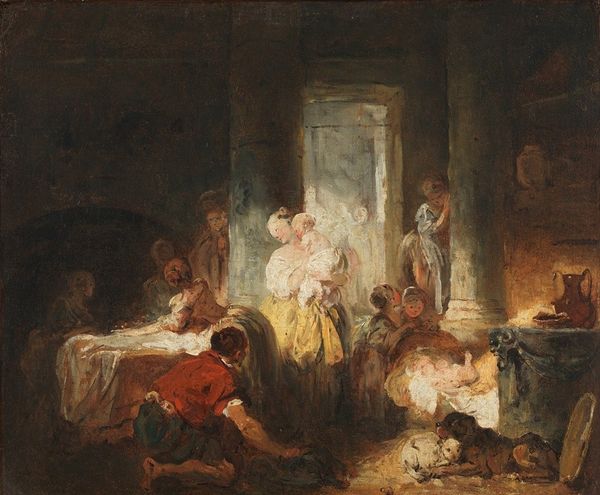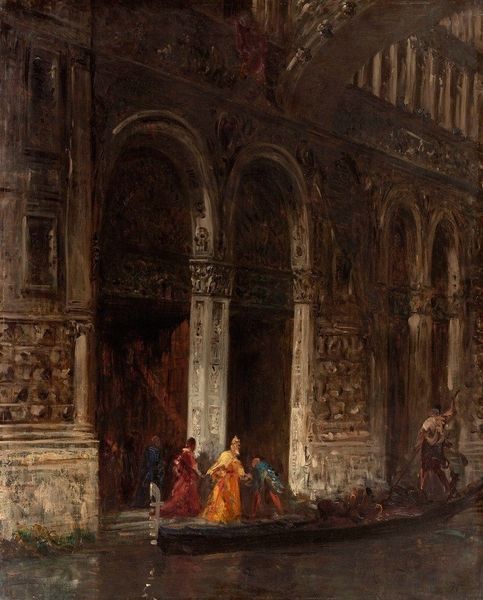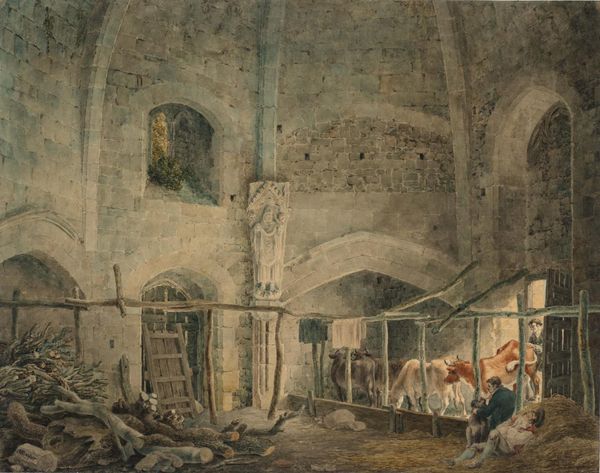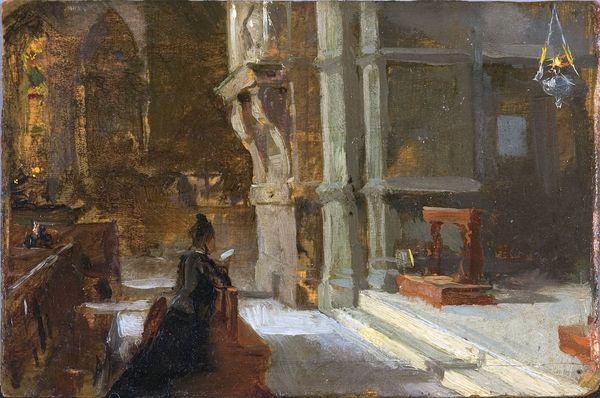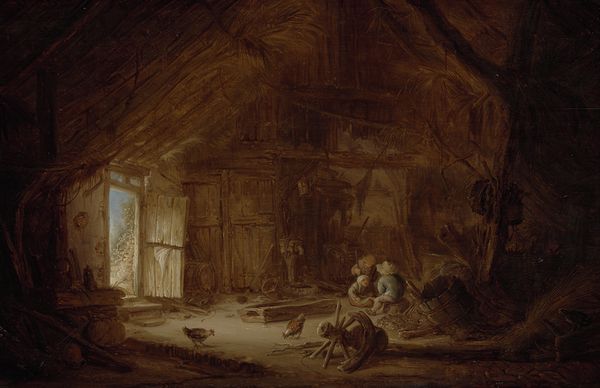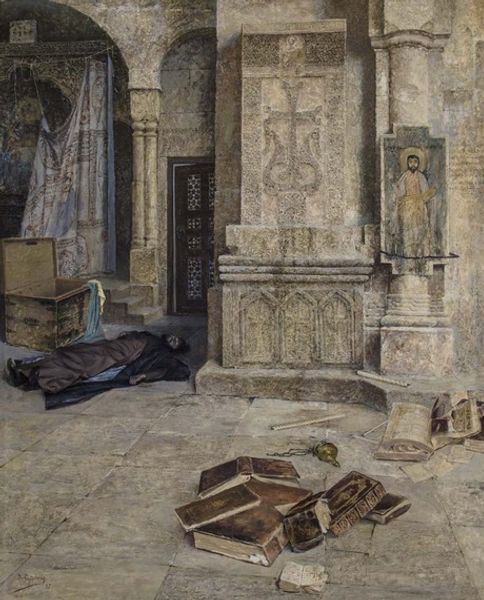
Copyright: Public Domain: Artvee
Curator: Hubert Robert painted "A Hermit Praying in the Ruins of a Roman Temple" around 1760. What strikes you most when you first view it? Editor: The overwhelming sense of decay, of course. But also the textures—the rough stone of the columns against the soft, draped fabric of the hermit's robe. It really emphasizes the materiality of the setting versus the individual. Curator: It is interesting that you start with decay. The work very much encapsulates the 18th-century fascination with ruins and the romanticization of the past. The way Robert stages it, we get the aesthetic of decline front and center, in vogue during that time. Editor: Right, but those ruins are made of something: stone, plaster, timber, likely sourced locally, fabricated by particular hands using certain tools. It’s about a culture's infrastructure turned to rubble. What were those builders thinking when they raised it? Curator: A statement of power and permanence. The grand Roman style became a symbol of cultural legitimacy that was heavily revisited during the neoclassical movement. But, reframed within Robert's piece, ruins evoke a sense of the ephemeral nature of human endeavor. This spoke to the changing political landscapes and societal structures of the time. Editor: Well, all things made, decay. So what I find powerful is thinking about the labor required, and the transformation from resource to ruin and, again, thinking about what human work goes into each phase, including the rendering. What are we to make of that transformation through process? Curator: The figure of the praying hermit is critical in how Robert answers your question, I believe. He signifies a turning away from worldly pursuits towards spiritual reflection, very much echoing the wider debates the Church was engaged with during the Enlightenment. The composition suggests the artist's position, too. A romantic yearning and cultural position of reverence toward the past—with some skepticism about contemporary power, too, naturally. Editor: Perhaps. To me, this feels more grounded: from imposing monumentality to repurposed space. The materials are humbled by time and the artist encourages a perspective of resource rather than solely one of decline. A testament to the process of creation. Curator: Perhaps the duality that makes Robert's paintings so compelling then! Thanks for this stimulating conversation. Editor: Absolutely. I enjoyed how we traced labor from antiquity to the 18th century.
Comments
No comments
Be the first to comment and join the conversation on the ultimate creative platform.
